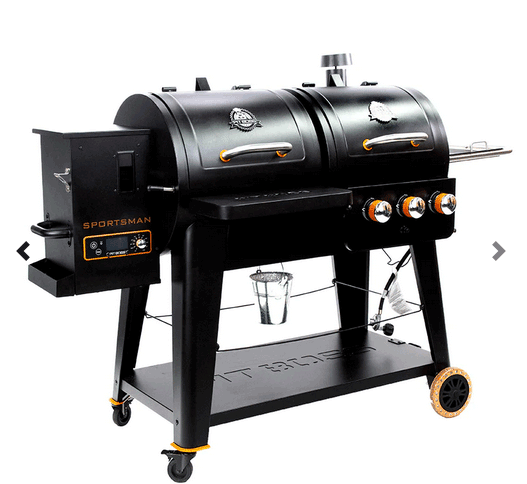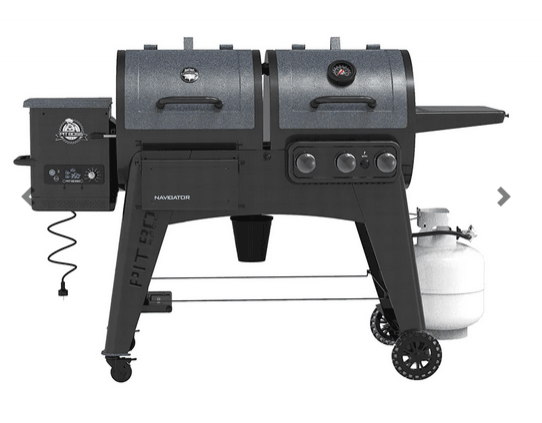Freestanding Gas Grills
Freestanding gas grills offer outstanding cooking performance and versatility, serving as the centerpiece of your outdoor kitchen or backyard living space. With their high BTU output, expansive cooking surfaces, and various features, these grills are designed to create an enjoyable and efficient grilling experience.
Freestanding gas grills available for sale for discount price at StovesDirect.com. Choose a freestanding gas grill and order online.
Benefits of Freestanding Gas Grills
Investing in a freestanding gas grill comes with numerous advantages:
- Cooking Efficiency: Gas grills are known for their rapid heat-up times and consistent temperature maintenance, ensuring quick and efficient cooking.
- Wide Temperature Range: Freestanding gas grills typically offer a broader temperature range, allowing you to cook a variety of items, from slow-smoked meats to high-heat searing steaks.
- Ease of Use: Operating a gas grill requires less experience and effort compared to charcoal grills. Adjusting the burners and temperature is simple and convenient.
- Fuel Convenience: Gas grills generally run on propane or natural gas, both of which are readily available, making cooking experiences smooth and worry-free.
- Easy Cleanup: As gas grills produce less ash and residue than charcoal grills, cleaning and maintenance tend to be quicker and more straightforward.
Types of Freestanding Gas Grills
There are two primary types of freestanding gas grills, differentiated by their fuel source:
-
Propane Freestanding Gas Grills: Propane grills run on either disposable propane canisters or refillable propane tanks. Their portability and ease of use make them a popular choice for many grilling enthusiasts.
-
Natural Gas Freestanding Grills: These grills are connected to a natural gas supply line, offering a continuous and stable fuel source. They are more environmentally friendly and cost-effective than propane grills; however, they require professional installation and may have limited mobility.
Key Factors to Consider When Purchasing a Freestanding Gas Grill
When shopping for a freestanding gas grill, keep in mind the following essential factors:
- Budget: Freestanding gas grills are available in various price ranges. Determine your budget and make a list of your preferred features to strike the right balance between cost and quality.
- Grill Size and Cooking Area: Assess the available space in your backyard or patio and consider the number of people you typically cook for. Choose a gas grill with an appropriate cooking surface area and dimensions to accommodate your needs.
- BTU (British Thermal Unit): BTU ratings indicate the grill’s heat output. While higher BTU ratings may result in faster heating times, it's essential to balance the heat output with your cooking needs.
- Number and Quality of Burners: The number and quality of burners significantly impact the grill's cooking performance, fuel efficiency, and temperature control. Opt for grills with adjustable and premium-grade burners.
- Material and Build Quality: Choose a grill made of durable materials like stainless steel or cast aluminum to ensure longevity and resistance to the outdoor elements.
- Additional Features: Consider additional features like a side burner, infrared burner, rotisserie kit, smoker box, or built-in storage to elevate your grilling experience.
Tips for Proper Use and Maintenance of Freestanding Gas Grills
- Assemble and Inspect the Grill: Follow the manufacturer's instructions to assemble your freestanding gas grill correctly and perform a thorough inspection before use. Ensure there are no gas leaks by checking the hose connections and regulator.
- Preheat the Grill: Always preheat the grill for at least 10–15 minutes before cooking to ensure it reaches the desired temperature and kills any bacteria on the grates.
- Clean the Grill: Regularly clean your grill’s grates after each use either with a grill brush or by soaking them in soapy water. Additionally, clean the burners and venturi tubes, and remove residue from the drip tray.
- Safety Measures: Never use a gas grill indoors, and maintain a safe distance from flammable materials. When using propane, store the tanks in a well-ventilated area and away from direct sunlight.
- Storage: If you aren't using your grill for an extended period or during the offseason, cover it securely and store it in a dry, sheltered location.
Popular Freestanding Gas Grill Models
Here are some popular freestanding gas grill models available in the market:
-
Weber Genesis II Series: Recognized for their high-quality construction, advanced grilling system, and dedicated searing zone, Weber Genesis II grills provide an excellent grilling experience in various sizes and configurations.
-
Napoleon Rogue Series: Napoleon Rogue grills offer durability, exceptional performance, and an array of additional features, such as a backlit control panel, infrared burners, side burners, and ample storage.
-
Broil King Regal Series: Renowned for their heavy-duty construction, superior heat retention, and even heat distribution, Broil King Regal series grills come equipped with multiple burners, cooking grids, and stainless steel components.




